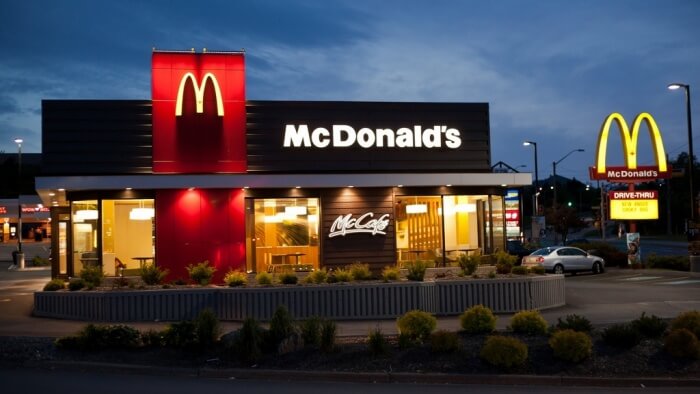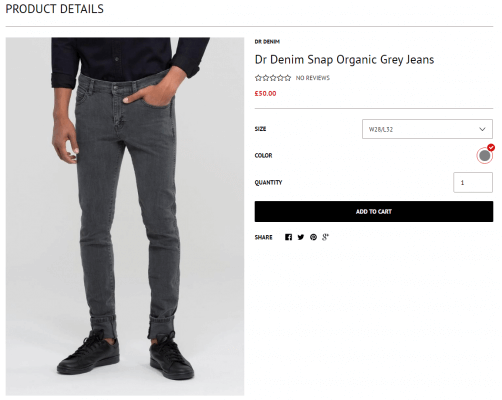Takeaways have gone from small fry to whopper seemingly overnight - what can businesses learn from marketing in this sector?
5 Marketing Tricks Businesses Can Learn From Takeaways
Takeaways have gone from small fry to whopper seemingly overnight - what can businesses learn from marketing in this sector?

According to market research performed by IBISWorld, the UK takeaway industry has performed well above expectation for the previous five years (2012-2016), posting an average annual growth figure of around 3.2%.
This is an even more impressive statistic when you consider the low rates of inflation and increased caution in consumer spending caused by the recession during this period. When you also add the increasing number of customers looking for better quality and healthier varieties of fast food then it’s clear to see that the takeaway industry is doing something right.
Here are five marketing ideas that other sectors can learn from the success of the takeaway industry and apply to their own business.
1. Use high quality suppliers and shout about it
As mentioned previously the industry has seen a big swing towards healthier, better quality food and the takeaway industry responded to this demand. More and more outlets are offering organic produce and higher quality products, as well as catering for the increasingly different lifestyle choices and dietary requirements they are met with from their customers.
Whilst you may say that the takeaway industry has no choice in making these changes in an ‘adapt or die’ scenario, you would be correct, but the scale in which these changes have been made could be a lesson to all.
Fast food behemoth McDonalds, more commonly known for offering calorie-laden fast food, were experiencing a big slump in business in late 2014.
Following his appointment their new CEO, Steve Easterbrook said “I will not shy away from the urgent need to reset this business” and that seems to be exactly what he is doing.
McDonalds now offer more healthy and high quality foods than they ever have in their history. The menu still carries most of their previous offerings but in addition to this they now have a plethora of healthier options such as salads, wraps and fruit.
If you want to apply this tactic to your own business, you could ensure that the high quality and distinction of product is highlighted throughout the transaction or service. For example, a retailer might like to add a range of organic clothing or ethically sourced materials to their product range.
Working Title Clothing, an independent retailer in Norwich stock a burgeoning spectrum of organic clothing to appeal to the widening consciousness over clothing manufacture and sustainability.
In terms of service providers, a heath or beauty business could relay the high quality of the service, professionalism of staff and unrivalled technology to produce products. This can be achieved by getting professional pictures taken of your team in action and the high tech equipment used to reassure prospects of the quality of service they will receive.
2. Effective pricing, promotions and special offers
In such a saturated marketplace it’s important to correctly position yourself with pricing that reflects the quality of the service or product you are offering whilst ensuring it’s within the limits of what your target customers are willing to pay.
Over the last few years the average value consumers are willing to pay for fast food has increased so this has given ample opportunity to increase quality and raise prices slightly which gives more incentive to customers to find a good promotion or special offer.
Special offers and discounts are a good way of challenging customers’ loyalty to other brands and converting previously unsure potential customers. Worldwide pizza delivery chain Domino’s have used discount codes effectively for this purpose.
Their business model involves inflated pricing around their products with discount codes available on their website and elsewhere on the internet. They also regularly post games on their site, apps and social media that allow you to win discount codes for performing well, whilst also collecting data for future marketing efforts.
On a smaller scale, local takeaway restaurants regularly run promotions on products that are popular, having lower priced set ‘meal deals’ and offering regular special offers.
Other business sectors such as the retail industry can adopt methods similar to this. ASOS, the largest UK online fashion store, are keen users of discount codes and special offers to allow their customers to feel as though they get good value.
They send out discount codes to their customers regularly and on their birthdays. They also operate a loyalty scheme where the more you order the more you save and you can also get free shipping.
As a smaller business, sustained discounting might affect your profit margins, so you might need to consider one off seasonal discounts or loyalty cards, where customers get their fifth or tenth purchase free or at a reduced price.
3. Gather customer data
For local fast food or takeaway outlets, the process of gathering customer data has got a lot easier in the last few years with the emergence of online takeaway ordering platforms such as Just Eat and Takeaway.com where customers can order food through these intermediaries.
Smaller takeaways have benefited from adopting this online infrastructure rather than having to invest in their own platform and the results have been great for data collection.
Smaller takeaways are now much more aware of who is buying from them and of their customers’ trends and actions. With this data they are better able to see where orders are coming from and if they notice a trend of orders coming from a certain area at the end of their catchment area they could make the decision to expand into that area and service the demand.
So what can other businesses learn from this? At various points during the transaction process, it’s key to collect data as this can reveal further opportunities to grow your business.
For example, logging addresses of customers will show you where your clients live and how far they travel to use your services or buy products from you.
If you don’t get the opportunity to log customer data during a transaction, you could always survey visitors in person, or collect email addresses to later send out a customer feedback survey. When you have collected this data, you can then look at new locations to target with your marketing.
4. Widen your target area
Using the data that they have gathered, small takeaways may decide to widen their target area. This can be particularly successful if they, as mentioned previously, notice a trend of orders coming from further afield.
Making that decision can be easy, but being able to expand quickly can be challenging, as in the usual ‘adapt or die’ scenario things need to be done quickly and efficiently. Such businesses would more than likely look to use a cash advance loan for a small business from a provider like Liberis to facilitate a quick expansion.
Takeaways use often overlooked methods for their marketing efforts, preferring leaflet drops, sponsoring local sports teams and even advertising in local print publications.
Depending on the style of business, these marketing avenues shouldn’t be overlooked based on them being seen as old hat. There are still many businesses that are able to use these means of advertising as they offer a service or product that is still in demand for customers that may not go on a computer regularly.
Whilst the trend for using print media is on the decline takeaway restaurants still rely on this tactic and with the figures they are currently producing it seems to be working for them.
5. Customer service
Making your customers your number one priority should be a main objective in all facets of business, but this can sometimes be overlooked.
In the fast food industry serving your customer to the best of your abilities is paramount as takeaway food is seen by many as a luxury and not a necessity and customers feel that it should be a seamless, pain-free experience.
Customers in most cases do not have to order from you due to the massive selection of outlets in the market, and takeaways should attempt to set themselves apart and adapt a strongly customer service-based approach because if they don’t there is the real risk that they will lose custom pretty quickly.
Most online takeaway marketplaces have a ratings system and if you aren’t matching up or being the market leader in these ratings you will soon fall down the pecking order.
Using some of the lessons learned from the takeaway industry can help you to better serve your customers and in turn make your businesses thrive, as they are.
Thanks for signing up to Minutehack alerts.
Brilliant editorials heading your way soon.
Okay, Thanks!






